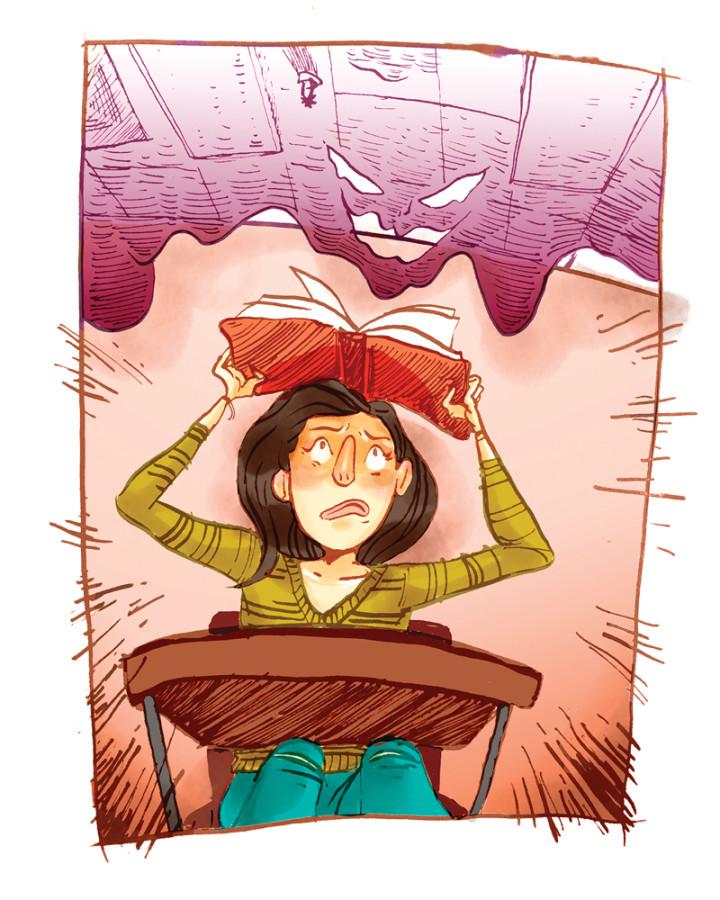Asbestos present in Hayward schools
July 16, 2015
School administrators are cautioned not to disturb it, inspectors warn of its dangers, and the EPA has banned it from new construction, yet asbestos remains in the 34 schools of the Hayward Unified School District, which serves approximately 20,879 students.
School administrators confirmed recently that a district-wide inspection was underway.
According to inspection reports obtained from the Professional Services Industry firm through a Freedom of Information request this Spring, asbestos was found in drywall, plaster, vinyl floor tiles, and pipe wraps.
In keeping with the federally mandated requirements of the Asbestos Hazard Emergency Response Act, the national firm provides engineering, consulting and testing services, and monitors and reports on the condition of asbestos every three years.
The inspection reported the presence of 92,635 square feet of vinyl asbestos tile, of which more than half had minimal damage that did not exceed 25 percent. According to the report, nearly 50 classrooms, art rooms, music rooms and offices contained this tile.
Coaches’ offices, metal shops, auto shops, and wood shop classes were visibly damaged in some cases, but still qualified for ranking of good condition, according to the report. Alongside tile in some coach offices and the shop areas, pipe wraps—straights and joints, are visibly hanging in upper corners of the shop areas.
“I wouldn’t say [conditions] are good, but there hasn’t been any changes,” one shop teacher, who wished to remain anonymous, told Pioneer reporters who toured the area.
Officials from the Hayward Unified School District did not respond to multiple requests for comment.
Asbestos, a natural mineral resistant to heat, flame and electricity, was a commonly-used building material in the U.S. until 1980, when the Environmental Protection Agency tagged it as a carcinogen and noted that the presence of even one percent of asbestos found in any material categorized that material as hazardous.
The American Cancer Society classifies asbestos as a “human carcinogen.”
According to the Mesothelioma and Asbestos Awareness center, asbestos is most harmful when it becomes airborne which can happen during building renovations.
According to an inspection from November 2011, Cherryland Elementary has 16,110 square feet of friable acoustical plaster that lies in the ceiling of corridors, offices, classrooms and the library. The plaster has been enclosed with ceiling tiles, unlike the drywall and plaster at Tennyson High School, which is only covered by wallpaper. Cherryland was built in 1948 and has 784 students.
According to inspection results from October 2011, Tennyson High School, built in 1957, is clear of Asbestos Containing Materials in 81 percent of its units. However, it still contains 6,200 square feet of friable drywall in classrooms, offices and parts of the library, which could put its 1,281 students at risk of exposure.
Inspector Brian Flanary expressed concerns about “staple and nail holes in the library that were not sealed,” in his report.
Teachers must be notified that materials “should not be stapled/nailed [or] screwed to ACM drywall,” inspector Flanary said, expressing concern about the crumbling of the drywall under the pressure of staples or nail holes. His 2011 report is the most recent on file.
Assistant Superintendent Lisa Grant-Dawson said the district begins by assessing and containing friable – able to be crushed by hand – asbestos, then determines whether the issue can be resolved by in-house staff who are certified in Hazardous Material management or if the work should be outsourced for safe removal.
According to survey records, the November 2011 inspection determined that Hayward High School has more Asbestos Containing Material than any school in the district. Established in 1892, Hayward High is one of the city’s oldest institutions and was relocated twice. It currently serves approximately 1,567 students.
Every unit of inspection in Hayward High had at least one source of ACM, and half showed the presence of both friable and non-friable material, according to inspections. Particles released in the air can cause various – sometimes severe – respiratory diseases.
More than 80 percent of all asbestos material in Hayward High was found to being the form of non-friable asbestos vinyl floor tile and friable pipe wraps—straights and joints.
Non-friable Asbestos, which does not disintegrate under hand pressure, is often encapsulated in hard-to-crush solids like concrete or asphalt, according to the EPA.
Grant-Dawson says that the district addresses more immediate demands that range from “student safety to power outages, structural repairs, and various maintenance and facility needs.”







